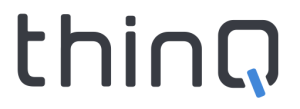Least Cost Routing: Software and Intermediary Tools Used for Dipping Calls

If you were to make a call overseas to say, London from New York, your priority would be to select the shortest possible route for switching. This you will do by considering local carriers in London that would allow you to switch at the lowest possible rates. This phenomenon is called Least Cost Routing, which allows telecom companies all over the world to dip calls at multiple destination points without exceeding their budgets.
LCR is a method of optimizing the best switching deals for a telecom company. The standard protocol followed is preparing charts of best routing carriers that charge minimally for all their inbound calls. This was earlier done manually by directly connecting to the telephony exchange. This however, sidelined the actual priority of the exchange center which is to manage calling traffic as opposed to preparing routing tables. Real time call signaling becomes extremely slow, not allowing more than a million routes to dip from the same source. If the switch is handling heavy traffic, exporting route tables becomes an even more cumbersome process.
Cherry-picking quicker routes are an absolute necessity today. This is possible with the help of updated routing software that allows access to a hundred million routes. In this, instead of signaling the routes directly to the switch, all tables are redirected towards a routing engine that optimizes these routes before the calls are terminated. An intermediate tool used to articulate the query communications between the switch and the routing server is SIP termination or Sessions Internet Protocol. It is the job of SIP to carry out the query-based and instructional tasks. The responses are incredibly quick, allowing for real time interactions without any interruptions.
The server engine connected to the SIP facility contains a large database of local number portability, which is derived from their source called Local Routing Number. LRN can be understood as the address base for every calling exchange that takes place. It is also the network that represents inbound and outbound calls. Many telecom providers are going digital with respect to LRN in order to have proper sources for call dipping and routing. Chances are that facilities making use of dialed digits have their calls misdirected and mal-priced. The implementation of either SIP termination or third party API is required. With a proper LRN source, you should be able dip calls via properly routed calling paths. Consequentially, it is needless to mention that your budget will automatically come down to the right amount.
LCR software gives you the authority to manage call traffics the way you want. With a custom-made routing table in hand, you will have the freedom to choose whichever carrier suits your business and budget requirements. The software is automated to carry out fraud policing and IP address authorization, which is practically half the job. It is also programmed to quickly resolve issues through CDR monitoring or SIP tools. Once you have the mal source identified, you simply have to access the SIP trace option. This will help you manage multiple carriers with greater ease.
ThinQ offers basic and advanced tools for efficient routing of calls. These include turnkey Least Cost Routing software along with Local Routing Number facilities and Sessions Internet Protocol tools. The application helps manage calling traffic, select preferred carriers, carry out fraud protection control, and conduct statistical analysis.




